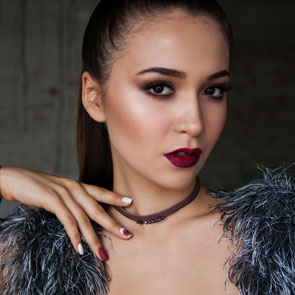Why Camouflage Color Pigments Are not Suitable for Permanent Makeup Correction
 When you want to get rid of old or low-quality permanent makeup,
you usually have two options: to cover it up or to get the pigment
out using laser technologies. While laser ink reduction is a very
common technique, some artists prefer to cover up old permanent
makeup tattoos with camouflage pigments.
When you want to get rid of old or low-quality permanent makeup,
you usually have two options: to cover it up or to get the pigment
out using laser technologies. While laser ink reduction is a very
common technique, some artists prefer to cover up old permanent
makeup tattoos with camouflage pigments.Now, one thing if the artist uses camouflage pigments to create a realistic tattoo ‒ for example, for nipple reconstruction, and the whole other thing is when they’re trying to use them over an old tattoo.
The best thing an artist can do about old permanent makeup gone wrong is to try and do a correction ‒ but only experienced PMU artists can do that:
Is it a safe treatment?
Permanent makeup in general is a completely safe treatment as it doesn’t scar the skin (except for microblading, although more sophisticated and safer techniques appeared), has a relatively short healing period, and has little to no complications if you follow aftercare instructions closely.
The main contraindications for any kind of permanent and semi-permanent makeup treatments are:
- intake of medicine that affects blood clotting;
- visible damage like scars or wounds on the treatment area;
- a history of allergic reactions to one of the pigment ingredients or lidocaine;
- an acute respiratory or overall inflammatory disease.
Other than that, you are good to go. Just make sure to follow all the aftercare instructions your permanent makeup artist gives you after the treatment. Most of the time, these are:
- avoiding saunas, swimming pools, and sunbaths for 10-14 days;
- avoiding makeup application in the treatment area;
- frequently applying the aftercare balm a PMU artist gives you after the treatment.
However, if you want to get your old makeup tattoo covered up with camouflage pigments, it won’t work ‒ lighter pigments will eventually dissolve in the skin, getting it a brand new weird color. If you weren’t lucky to have microblading brows where the ink turned blueish, covering it even with warm camouflage shades will only make the odd color more vivid as time passes by.
How long does permanent makeup last?
If we’re talking about your initial permanent makeup procedure, these usually take from 45 minutes to 2-3 hours of your time, but the effect stays on for 3 months to 3 years depending on the area.
Everything is individual here. If you have young skin with a fast cell metabolism, expect the pigment to wear off in 6-8 months. In some cases (for example, for BB Glow treatment or some types of lip shading procedure), the effect will stay for 6 months if you’re lucky. Then, the touch-up is required. Still, it’s anyway better than applying makeup every morning.
And if you will want to get rid of your permanent or semi-permanent makeup tattoo, ask the artist to remove it with a laser or cover it up with a new treatment instead of injecting camouflage pigments over it.
Is it the right procedure for you?
So, who is suitable for permanent and semi-permanent makeup procedures?
The answer is anyone older than eighteen years old. You can start doing it at 20, 21, or 40 ‒ it doesn’t matter as long as you wish to preserve the youth and freshness of your look.
What matters more, though, is your readiness and willingness to spend the healing period without going out much. See, during the healing process, the skin impacted by the needle with pigment will try to renew itself as soon as possible. This is when you will notice a bit of crusts coming off your brows or lips. It’s a natural reaction, so you don’t have to panic. Sure, your look will be affected as you’re not allowed to take these crusting pieces off (unless you want the pigment to be spread unevenly, which is hardly the case). You might want to take a few days off for the healing period ‒ and that’s reasonable.
Some expected minor challenges with permanent and semi-permanent makeup are aftercare and the wait for the touch-up procedure. Other than that, you won’t experience any trouble with this beauty treatment no matter the area you’re about to have it on.